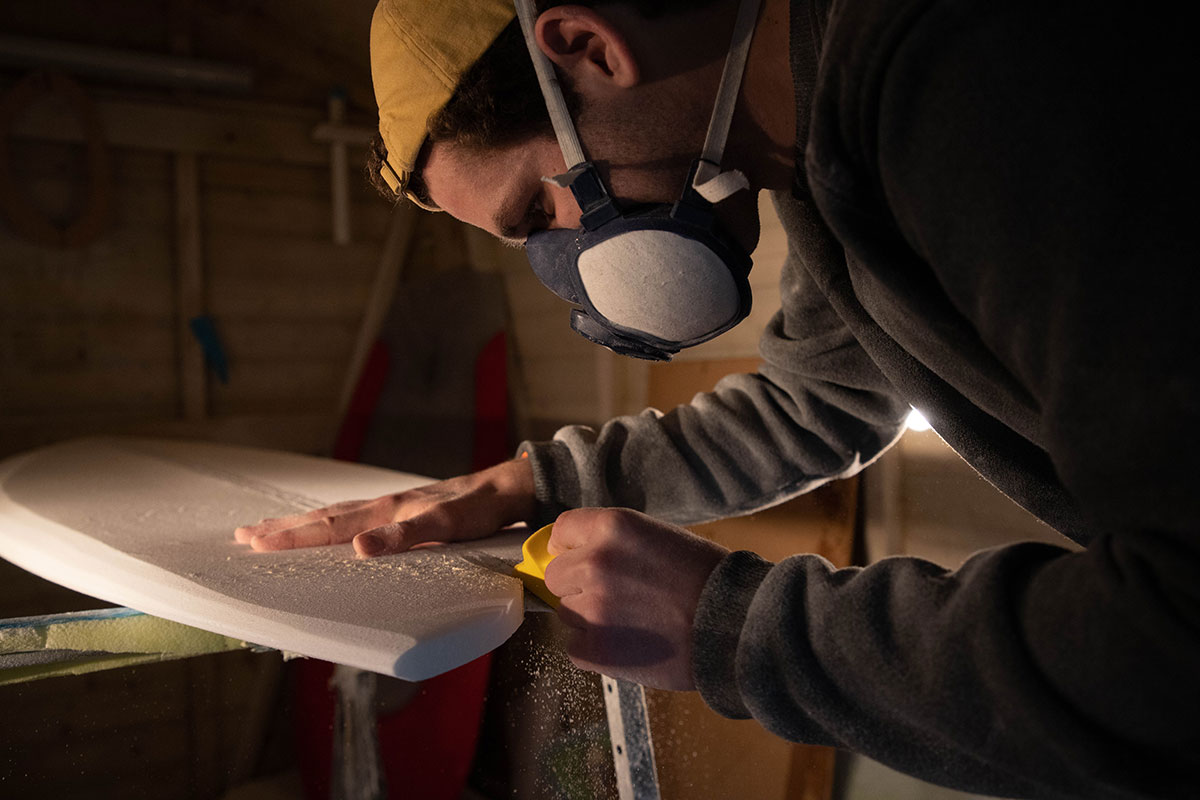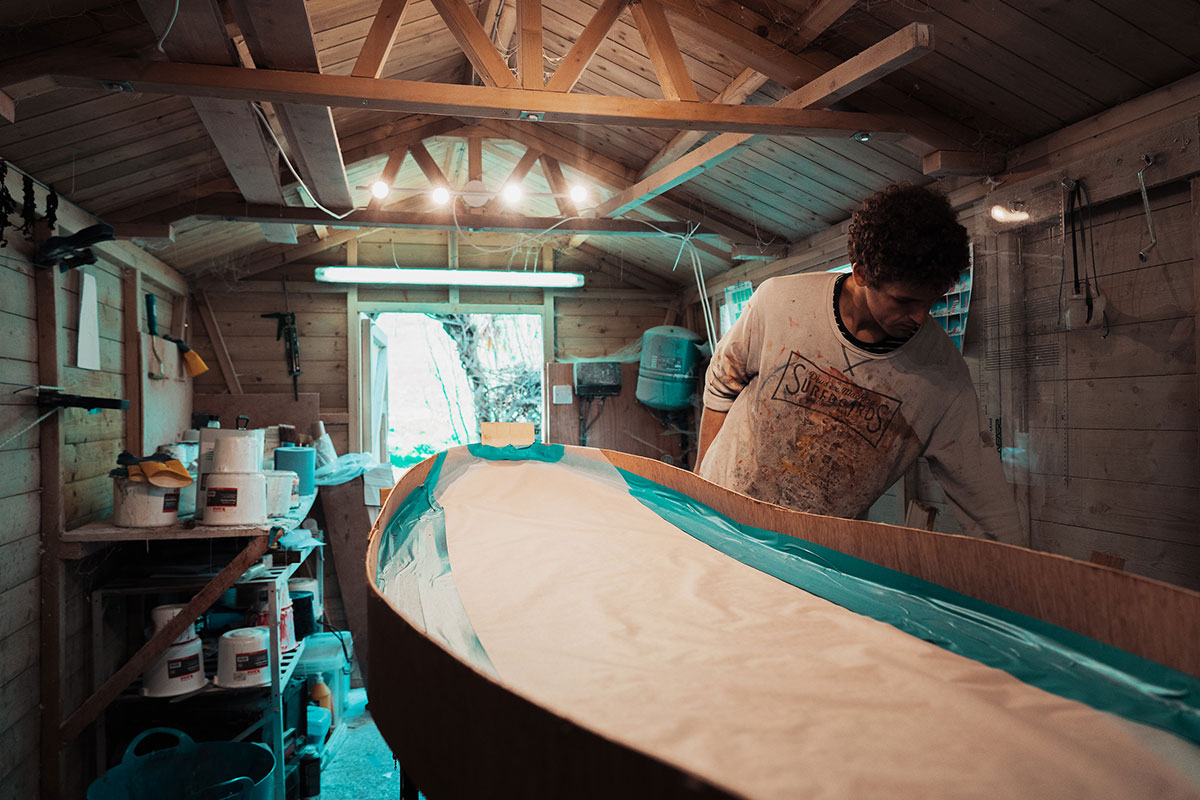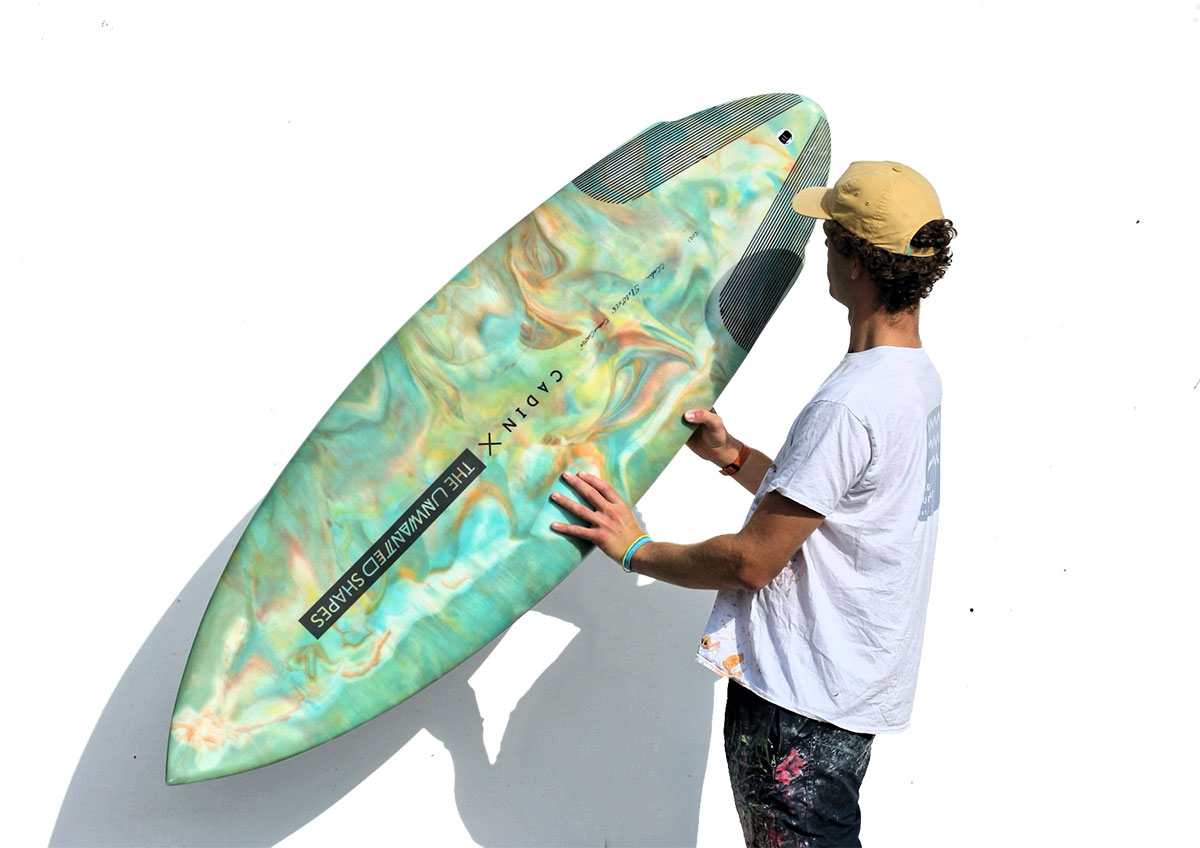I first heard about Charlie Cadin’s sustainable surfboards back in school. Witnessing him haul bucketloads of wine corks through the school gates had made for a confusing morning. When I found out he was creating a surfboard for a DT project, I marvelled at the idea of repurposing the remnants of a good night out. To my late teenage mind, there was nothing so poetic as this.
Charlie got into surfing as a kid, at one of the little surf schools along St Ouens Bay. He dabbled with the sport all his life, but became properly invested during secondary school. On the side, he made small wooden bodyboards created using left-over wood. This evolved during covid, when he kept himself occupied with mountains of insulation foam from B&Q. Charlie’s lockdown distraction of choice was much better than mine. Whilst he was becoming a surfboard shaper, I was trying to find willing mouths to shove my banana bread in.
Pandemic-Charlie could never have known where his time-killing hobby would take him. Last time we spoke with him, he had just created his first surfboard from one of Jersey’s invasive seaweed species. It was an engineering feat that earned him a Vissla Innovators Award in 2020. Since then he has revolutionised his crafting process, turning seaweed into a foam which can be shaped just like a regular board. The end goal with this is to create materials that another surfboard shaper can just pick up and use, without needing different equipment or having to change their techniques. Charlie noted that “there’s still a fair way to go, but the process of getting there is fun for me”.

Despite this statement, Charlie has already gone… far. One of his seaweed boards were used by The World Surf League for a WSL event in Portugal. The board won the entire competition. His creations have been put to the test in some of the biggest winter waves the UK has ever seen. Reflecting on this moment, Charlie admits “it was incredible to see a board I shaped being used in very hectic conditions”, despite it being “pretty stressful”.
But whilst the highs have been high, the lows have been low. Charlie spent a gruelling ten months recovering from a spinal injury inflicted during surfing. Overcoming this and getting fit again was the hardest thing he’s ever done. In addition to these personal struggles, he faced obstacles in his craft too. The materials made from seaweed were really unpredictable. You could spend a week preparing and making the mixture, and then overnight a slight temperature or humidity change could completely warp the board. I’ve made enough sunken banana breads in my time to really understand Charlie’s struggle. Like my baking endeavours, consistency can be a real issue with bio-based materials. It means that the time taken to make them is so huge, it is difficult to put a fair price on.

For this reason, Charlie does not currently sell his sustainable surfboards. He sees this endeavour as mostly testing and developing new materials. So far, he’s created boards made from plastic bottles, disposable face masks and old skateboard decks.
When he’s not at university studying marine engineering, Charlie divides his time between his sustainable experiments and creating standard, normal boards. These he sells through word of mouth, and he is “incredibly grateful” to the people who are supporting these creations.
But why does Charlie also make regular boards? After dedicating so much time to seaweed, does he not feel inner-turmoil putting it to the side and doing something else? He told me that there are many factors to consider in terms of sustainability. For example, if a 50% bio-based board only lasts two years before needing replacing, arguably a traditional board that lasts for decades is better. Charlie noted that it is “a tricky balance between durability, repairability, and environmental impact”. It’s a reminder to keep an open-mind when thinking of ways to battle the climate crisis. What Charlie’s doing is amazing, and he’s learnt a lot. But he isn’t afraid to go back to the drawing board and change things up when he needs to.
He admitted that it is hard to feel like you’re making a contribution when you compare yourself to large polluting companies. However, he believes that our individuals efforts add up. He encourages others to just take a chance and follow their heart when it comes to these things. He says “even if you have the smallest idea in your mind – give it a go”. After all, Charlie’s sustainable surfboard projects began when he was poked in the foot by a tough bit of seaweed. If he hadn’t decided to follow that first spark, he wouldn’t be where he is now.
Next time I host a party I’m donating all the rubbish to Charlie’s projects. Maybe minus the pizza crusts and cigarette butts (I’m not sure how well they’ll hold up in the waves).
Instagram: @charlie.cadin
Featured Image: Luke Hosty


